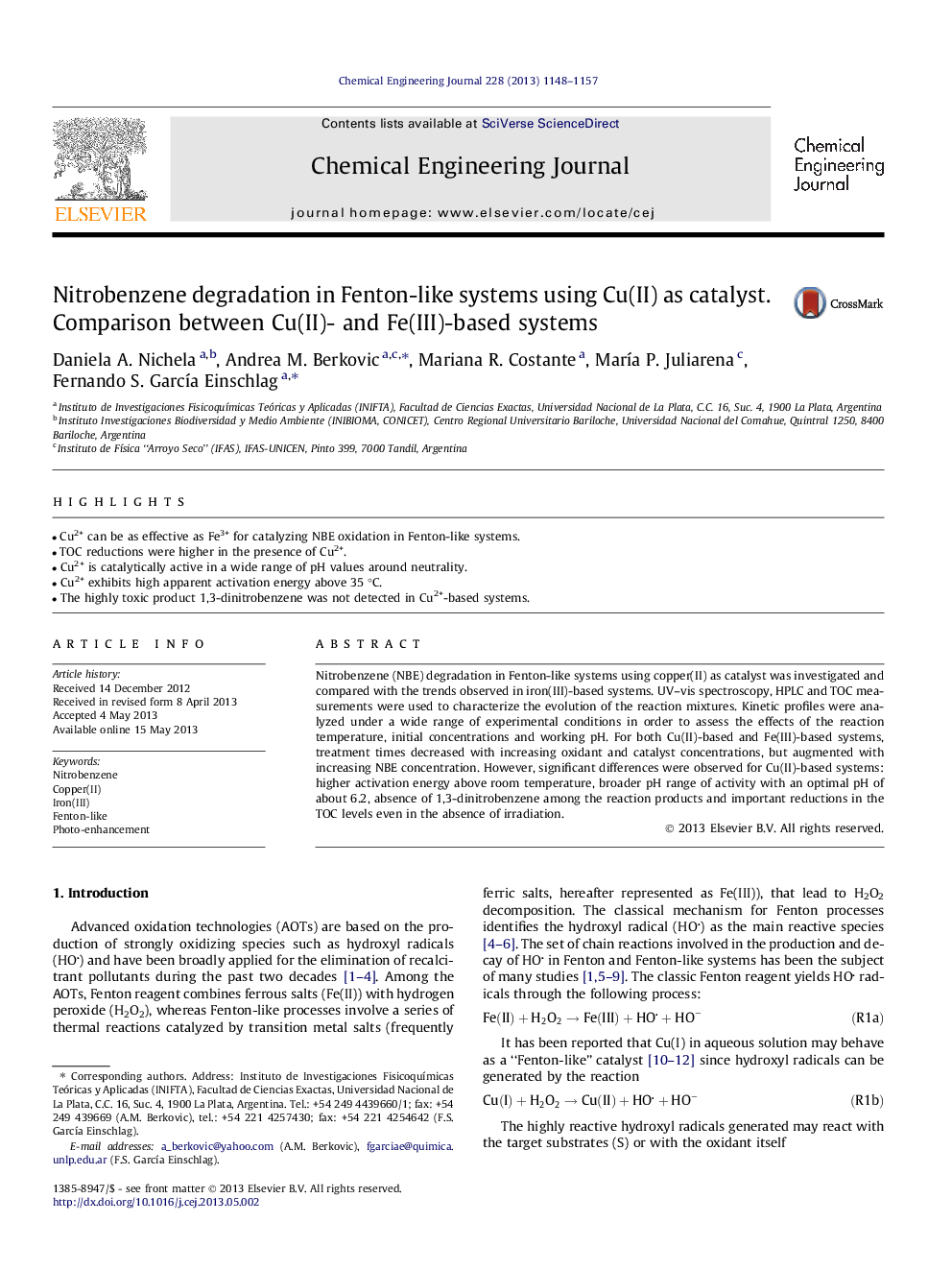| Article ID | Journal | Published Year | Pages | File Type |
|---|---|---|---|---|
| 6587794 | Chemical Engineering Journal | 2013 | 10 Pages |
Abstract
Nitrobenzene (NBE) degradation in Fenton-like systems using copper(II) as catalyst was investigated and compared with the trends observed in iron(III)-based systems. UV-vis spectroscopy, HPLC and TOC measurements were used to characterize the evolution of the reaction mixtures. Kinetic profiles were analyzed under a wide range of experimental conditions in order to assess the effects of the reaction temperature, initial concentrations and working pH. For both Cu(II)-based and Fe(III)-based systems, treatment times decreased with increasing oxidant and catalyst concentrations, but augmented with increasing NBE concentration. However, significant differences were observed for Cu(II)-based systems: higher activation energy above room temperature, broader pH range of activity with an optimal pH of about 6.2, absence of 1,3-dinitrobenzene among the reaction products and important reductions in the TOC levels even in the absence of irradiation.
Related Topics
Physical Sciences and Engineering
Chemical Engineering
Chemical Engineering (General)
Authors
Daniela A. Nichela, Andrea M. Berkovic, Mariana R. Costante, MarÃa P. Juliarena, Fernando S. GarcÃa Einschlag,
